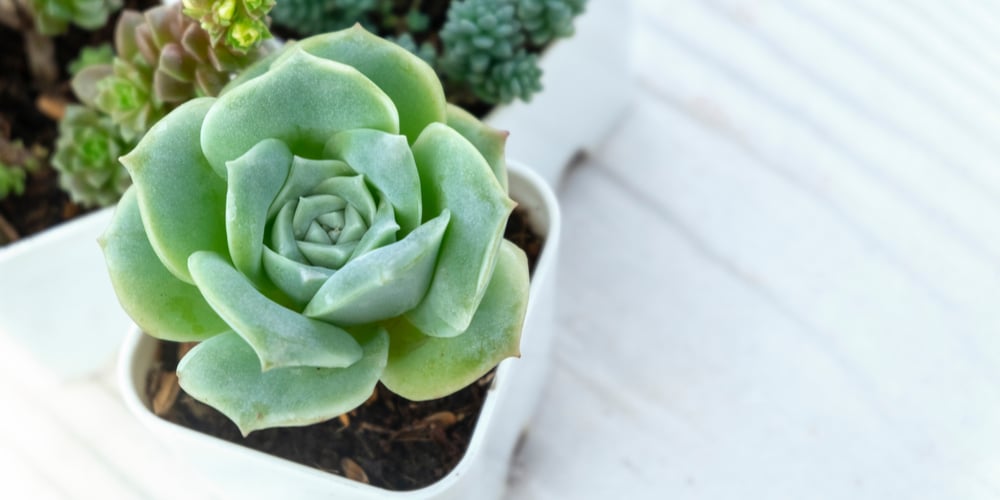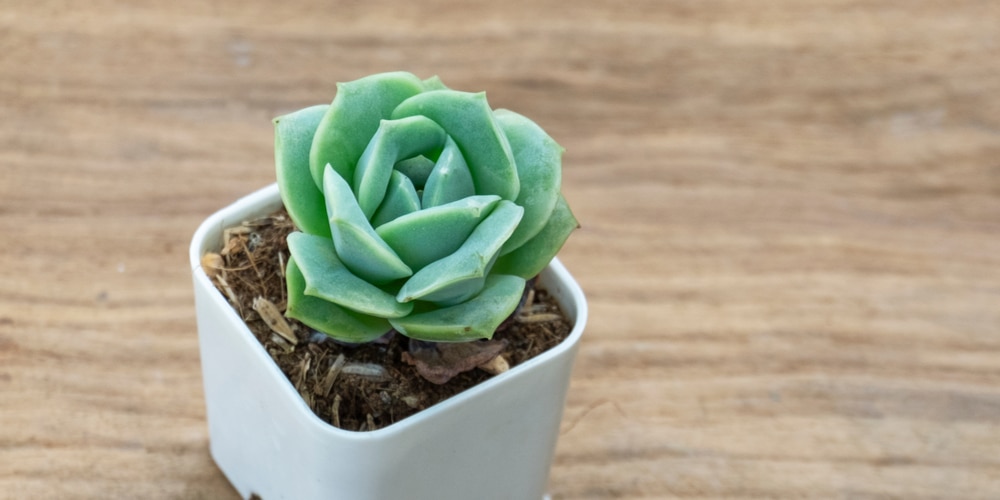Succulents are one of the most popular plants in homes and offices. They’re low-maintenance, beautiful, and come in various shapes and sizes. One type of succulent plant that is particularly popular among plant lovers is Graptoveria Lovely Rose.
Graptoveria Lovely Rose is a rare hybrid succulent created by crossing two other types of succulents. This succulent is a hybrid succulent that is not found in nature.
Easily recognizable by its striking rosette shape and silvery green leaves, Graptoveria Lovely Rose is a must-have for any succulent enthusiast. The leaves of this plant are thick and fleshy, which helps the plant store water. While the tips of the leaves are often light yellow, adding to the plant’s overall beauty.
| Botanical Name | Graptoveria Lovely Rose |
| Common Name |
Lovely Rose |
| Plant Type | Perennial |
| Flower Color | Yellow |
| Size When Mature | 4-6 inches |
| Bloom Time | Spring to Summer |
| Sun Requirements |
Full to Partial Sun |
| USDA Hardiness Zones | 12b – 13 |
| Soil PH Range | 5.5 -6.0 |
| Soil Type | Acidic, well-draining, moist |
| Water Needs | Medium |
| Native Area | Hybrid, not found in nature |
What You Need to Know About Graptoveria Lovely Rose
Graptoveria Lovely Rose, most commonly known as Lovely Rose, is a Korean hybrid plant. This plant was created by crossing two other succulents – Graptopetalum and Echeveria. The resulting plant is a beautiful succulent with silvery green and rosette leaves that come either alone or as a group.
This plant can grow to a height of 4-6 inches and a width of 1-2 inches. It doesn’t take so much space, which makes it perfect for small gardens or as an indoor plant. Lovely Rose is a slow-growing plant, which means you won’t have to worry about it outgrowing its pot anytime soon.
Fragrant yellow flowers emerge from Lovely Rose when springtime comes, making the plant even more beautiful. Like most succulent plants, Lovely Rose is very easy to care for and is an excellent choice for beginner succulent growers. This plant is tolerant of drought and can survive for long periods without water.
How to Care for Graptoveria Lovely Rose
Here’s everything you need to know about growing and caring for a thriving Graptoveria Lovely Rose:
Light
Graptoveria Lovely Rose loves bathing in the sun. For the plant to mature into its most beautiful form, it is best to place them in direct sunlight. Putting them in the shade will also work but will result in the plant being smaller and having less pronounced colors.
Water and Soil Needs
This lovely plant doesn’t need a lot of water. Considering that it’s a succulent, it’s best to water it only when the soil has completely dried out. The best time to water this plant, like any other succulent is when the soil is completely dry. In the winter seasons, it is best to water the plant less often.
In terms of soil, this plant grows best in well-drained, sandy soil. Mix in some perlite or sand to improve drainage if your soil is heavy or clay-like. The plant will thrive when put in soil with a ph of 5.5 -6.0.
Temperature Requirements
Graptoveria Lovely Rose is hardy in USDA zones 12b-13. A temperature between 55°F – 70°F is ideal for this plant. If you want to keep your plant outdoors, make sure that the temperature doesn’t drop below 50°F.
If it does dip below 41°F for a prolonged period, the plant will start to experience some damage. Moving it indoors during the colder months is the best way to protect it from the cold weather.
Fertilizer
This succulent is relatively low-maintenance and does not require much fertilizer. However, if you want to promote growth, you can feed it once a month with diluted liquid fertilizer. During the growing season, you can add some compost to the soil to give the plant an extra boost of nutrients.
Common Diseases
Like all plants, Graptoveria Lovely Rose can be susceptible to diseases. The most common problems include root rot, fungal infections, and mealybugs.
Root rot is the most dangerous of these diseases, as it can quickly kill the plant. If you suspect the plant has root rot, immediately remove it from its pot and inspect the roots. If they are mushy or brown, you will need to take action to save the plant. Cut away any affected roots and replant in fresh, well-draining soil. Your plant should recover quickly if the root rot is caught early enough.
Fungal infections are another common problem for the plant. These can often be treated with a fungicide, but if the infection is severe, you may need to discard the plant.
Mealybugs can also be a problem, although they are relatively easy to control. Regularly inspect your plant for signs of pests; if you see any, treat them with an insecticide.
Graptoveria Lovely Rose Propagation
Graptoveria Lovely Rose is a popular plant for propagation because it is easy to grow and care for. Propagation can be done by stem cuttings or leaf cuttings.
Stem cuttings should be taken from healthy, actively growing plants. They should be 3-4 inches long, and you should remove the bottom leaves. It would be best to take leaf cuttings from healthy, mature leaves. You should cut the leaf at the base, and the bottom portion of the leaf should be buried in a sterile potting mix.
Both stem cuttings and leaf cuttings will take several weeks to root. Once they have rooted, you can transplant them into individual pots filled with well-draining cactus or succulent potting mix. From there, follow the standard care instructions for Graptoveria Lovely Rose.
Related Article: Graptoveria Debbie Care


